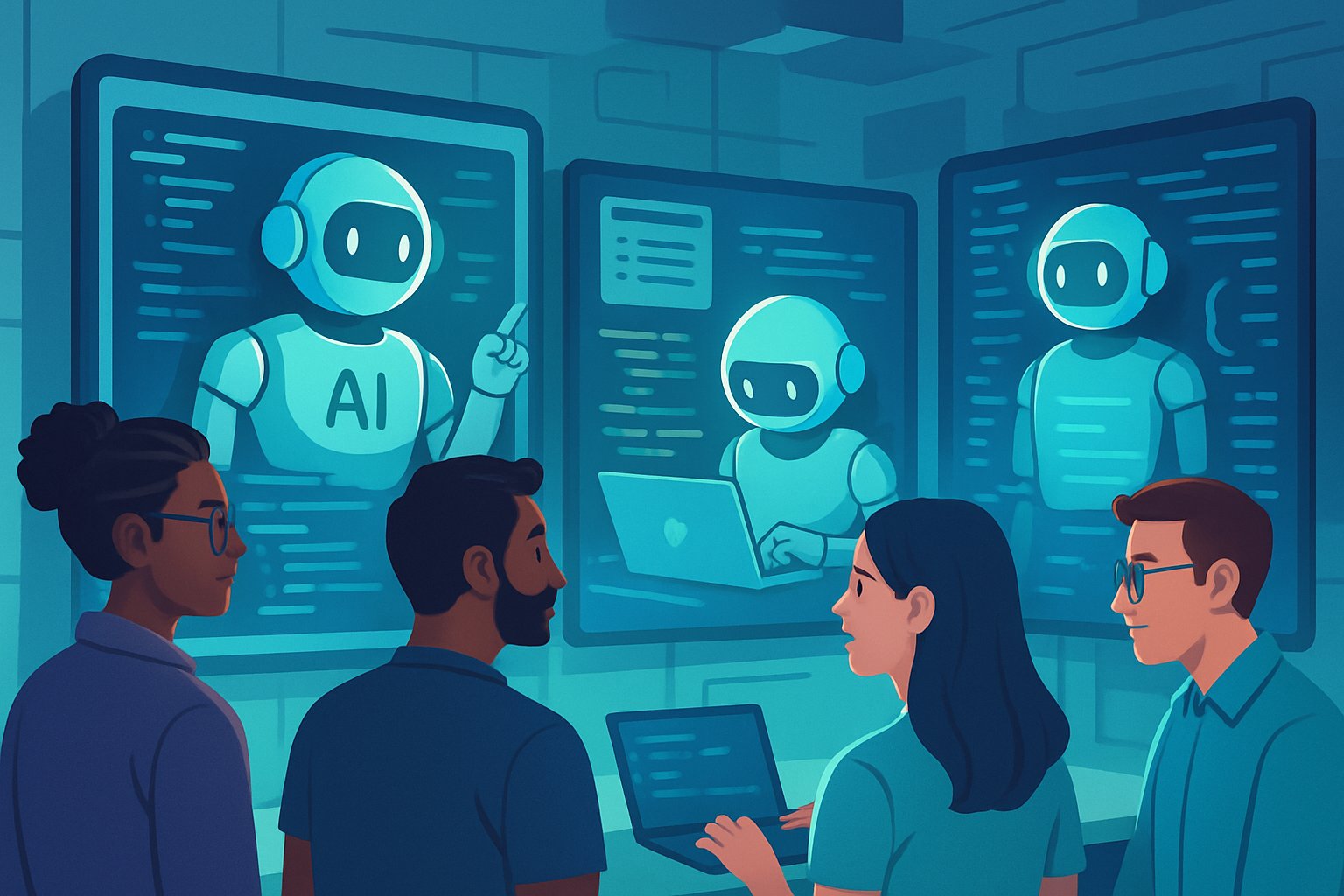
AI CERTS
12 hours ago
Google Antigravity Boosts Autonomous Software Engineering
Industries following agent planning-execution-validation models are watching closely. Meanwhile, Antigravity supports multiple large models, including Gemini 3 Pro access. It also integrates Claude Sonnet 4.5 and GPT-OSS for added flexibility. Nevertheless, early testers report 5-hour rate limits and occasional overload errors. The stakes are high because autonomous software engineering now drives competitive advantage.
Core Platform Overview
Antigravity arrives as a free desktop client for Windows, macOS, and Linux. Moreover, Google positions the application as a command center for autonomous software engineering teams. Users launch agents from the Manager surface while a familiar editor handles synchronous tasks. Therefore, Gemini 3 Pro access ships by default, bringing higher context windows for agent reasoning. Each agent receives controlled access to editor, terminal, and browser resources. In contrast, earlier chat oriented assistants lacked such integrated tool permissions. Artifacts then capture results as screenshots, plans, and recorded sessions for later inspection.
Consequently, reviews become faster because stakeholders examine concrete evidence rather than scroll logs. This design underpins Google's vision for trustworthy autonomous software engineering at enterprise scale. These architectural basics illustrate Antigravity's differentiators. However, understanding feature depth requires deeper investigation. Antigravity combines integrated tools and verifiable outputs. Subsequently, individual features reveal how Google executes that promise.

Key Features Explained Clearly
Google highlights four signature capabilities within Antigravity. Firstly, agent planning-execution-validation flows operate asynchronously through the Manager dashboard. Secondly, the editor proposes real-time code suggestions powered by Gemini 3 Pro access. Thirdly, every action yields an Artifact, which reviewers can approve or reject. Finally, agents store reusable context snippets, nurturing incremental improvement.
- Artifacts include task lists, test outputs, and browser recordings for traceable auditing.
- Agents can spawn sub-agents, supporting nested task delegation scenarios.
- Gemini 3 Pro access refreshes quotas under preview limits.
- Third-party models Claude Sonnet 4.5 and GPT-OSS activate with one toggle.
Moreover, Antigravity allows mixing models within the same workspace. Developers might assign Claude Sonnet 4.5 to documentation while using GPT-OSS for unit tests. Such flexibility supports experiment driven autonomous software engineering practices. Nevertheless, quotas remain, and 5-hour rate limits still apply across all choices. These features collectively enable extensive automation. However, model diversity warrants closer attention next.
Model Options And Choice
Antigravity embraces model optionality for autonomous software engineering during the preview window. Consequently, teams may compare performance, cost, and alignment side by side. Gemini 3 Pro access offers tight integration, faster streaming, and preferential resource allocation. Meanwhile, Claude Sonnet 4.5 excels at summarization and long context refactors. In contrast, GPT-OSS provides open weights for repository constrained deployments. Google claims switching models requires no code changes, only agent configuration. Additionally, agents can use different engines within one mission, supporting agent planning-execution-validation handoffs. However, hitting 5-hour rate limits on Gemini may push fallback routing to alternatives. Therefore, monitoring usage metrics becomes essential. Choice empowers autonomous software engineering but increases testing complexity. Balancing performance with quotas drives real-world satisfaction. Next, developer feedback illustrates early friction.
Early Developer Experience Insights
Public preview feedback emerged within hours of launch. VentureBeat highlighted bugs causing agent stalls and provider overload messages. Furthermore, some users reached 5-hour rate limits after long refactor sessions. Nevertheless, many praised Artifacts for simplifying pull request reviews. Dominic Preston at The Verge noted the transparency advantages over black box chat logs. Additionally, enterprise engineers voiced security concerns about unrestricted terminal access. Security blogs advised disabling filesystem write permissions until policies mature. Google responded, promising rapid patch cycles and clearer governance guides. Subsequently, user sentiment shifted from excitement to cautious optimism. Continued observations will show whether autonomous software engineering benefits outweigh headaches. Preview feedback spotlights stability and security. Those concerns lead naturally to governance discussion.
Security And Governance Considerations
Allowing agents terminal authority expands attack surfaces. Therefore, enterprises must enforce least privilege environments and network segmentation. Google recommends audit logging every Artifact plus every shell command. Moreover, rate limit refresh intervals provide a throttle against denial-of-wallet abuse. Yet, periodic quota refresh alone cannot block malicious code execution. Independent researchers propose multilayer sandboxing and air-gapped test containers. Additionally, teams can validate agent planning-execution-validation outputs before merging. Professionals can enhance expertise with the AI+ Developer™ certification. Such training strengthens defensive design for autonomous software engineering initiatives. Robust governance safeguards productivity gains. Finally, we assess strategic impacts.
Strategic Business Implications Key
Antigravity arrives during a race for developer mindshare. Consequently, Google positions Gemini royalties as future revenue. Broader adoption could lock teams into Gemini 3 Pro access and associated services. Meanwhile, multi-model support reduces switching friction, softening antitrust scrutiny. Investors recall the $2.4B Windsurf talent acquisition that accelerated product velocity. Moreover, Antigravity competes directly with Cursor and Copilot Chat. In contrast, those tools lack integrated agent planning-execution-validation dashboards. Therefore, autonomous software engineering may soon demand verifiable Artifacts as table stakes. Subsequently, CIOs will evaluate Antigravity within larger AI investment roadmaps. Strategic pressures will guide adoption decisions. We close with final reflections.
Conclusion And Outlook Ahead
Antigravity marks a pivotal milestone for developer tooling. Google blends agent planning-execution-validation, multi-model choice, and transparent Artifacts. Furthermore, Gemini 3 Pro access lowers experimentation barriers while alternatives Claude Sonnet 4.5 and GPT-OSS encourage comparison. Nevertheless, 5-hour rate limits and early instabilities remind teams to pilot cautiously. Robust governance training, including the earlier linked certification, will help secure rollouts. Consequently, autonomous software engineering can evolve from concept to production with reduced risk. Adopters should download the preview, test workflows, and provide feedback to shape future releases. Explore the platform today and elevate your practice.



